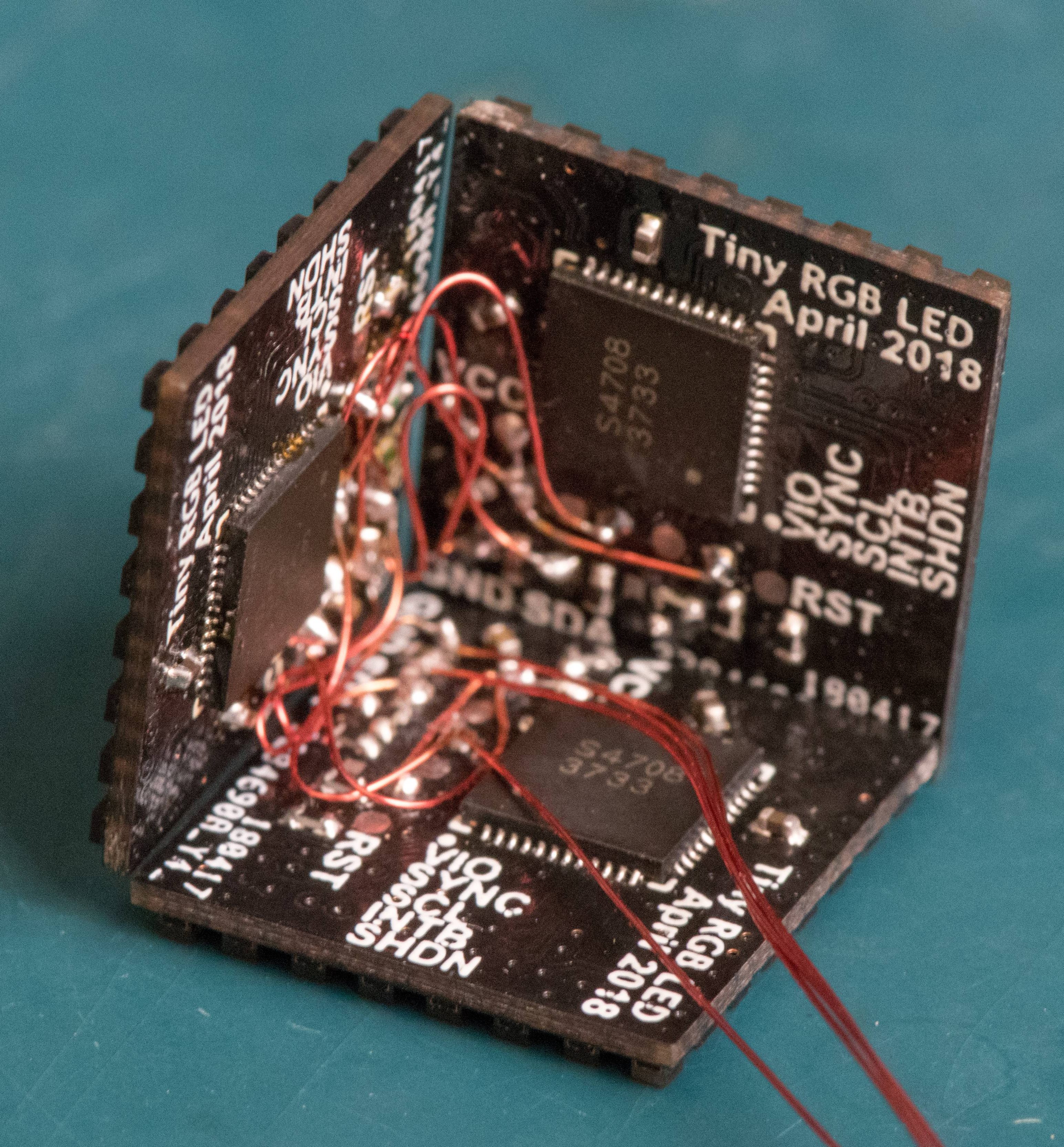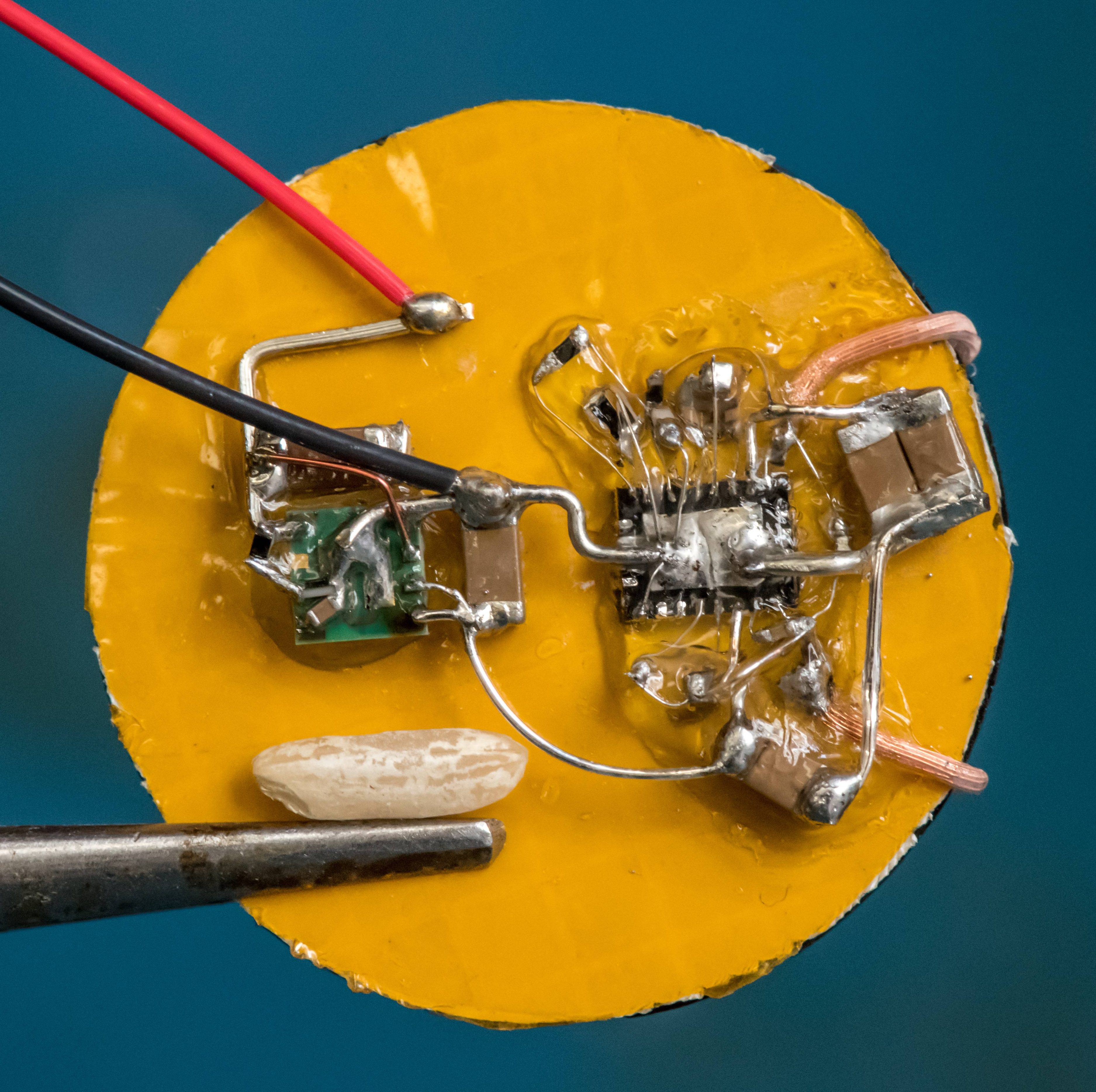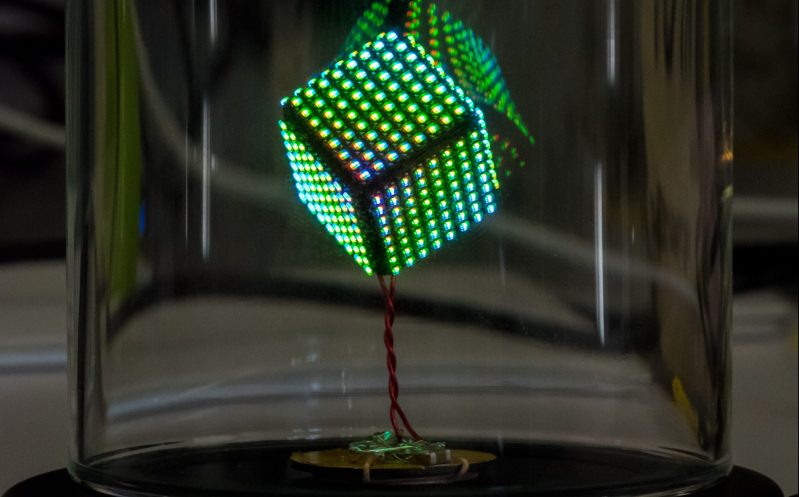When [Freddie] was faced with the challenge of building a sendoff gift for an an LED-loving coworker he hatched a plan. Instead of making a display from existing video wall LED panels he would make a cube. But not just any cube, a miniature desk sized one that wasn’t short of features or performance. We’d be over the moon if someone gifted us with this itty-bitty Qi coil-powered masterpiece of an RGB cube.
Recently we’ve been blessed with a bevy of beautiful, animated RGB cubes but none hit quite this intersection of size and function. The key ingredient here is tiny but affordable RGB LEDs which measure 1 mm on a side. But LEDs this small are dwarfed by the otherwise minuscule “2020” package WS2812’s and APA102s of the world. Pushing his layout capabilities to the max [Freddie] squeezed each package together into a grid with elements separated by less than 1 mm, resulting in a 64 LED panel that is only 16 mm x 16 mm panel (with test points and controller mounted to the back). Each of these four-layer PCBs that makes up the completed cube contains an astonishing 950 mm of tracking, meaning the entire cube has nearly six meters of traces!
How do you power such a small device with no obvious places to locate a connector? By running magnet wire through a corner and down to a Qi coil of course. Not to let the cube itself outshine the power supply [Freddie] managed to deadbug a suitably impressive supply on the back of the coil itself. Notice the grain of rice in the photo to the left! The only downside here is that the processor – which hangs diagonally in the cube on a tiny motherboard – cannot be reprogrammed. Hopefully future versions will run programming lines out as well.
Check out the video of the cube in action after the break, and the linked photo album for much higher resolution macro photos of the build. While you’re there take a moment to admire the layout sample from one of the panels! If this sets the tone, we’re hoping to see more of [Freddie]’s going-away hacks in the future!
















Genius. Pure solder-y genius
Shut up and take my money.
Damn, I’m impressed but I have one suggestion, stupid though it may be. To really freak people out put the cube into a glass of mineral oil (looking like water) and power up the cube! “A glowing cube floating in water!? WTF!!”
I didn’t fully appreciate the tininess until I saw the grain of rice for size comparison…….**cuhh-POW** <-mind blown sound
Snap, Crackle, Pop!!!
I saw a cooler version at Shanghai Xinchejian hackerspace- RGB led cube that was mounted on a servo. The viewer plays 3D snake on it with a sugru joystick. Can’t seem to find more details online, sadly.
I’d buy that.
Pretty cool. The only thing I would have done differently would be to run some traces to the edge and dropped some vias. Then soldered all the connections there.
I was trying to figure out the way a 16×12 driver was used for 8x8x3. Then I saw that each column is broken up into two interleaved strings of 4. So its really a 16x4x3 display. Very cool !!
Minor nitpick, but this article’s use of the word “dwarf” is incorrect. To dwarf something is to make that thing look small, so it should have read “LEDs this small are dwarfed by even the otherwise minuscule “2020” package”
Wow! it’s great technology